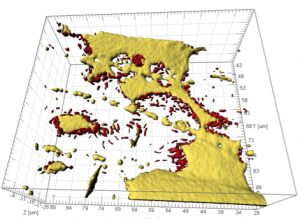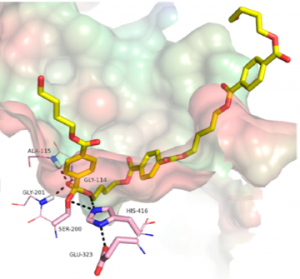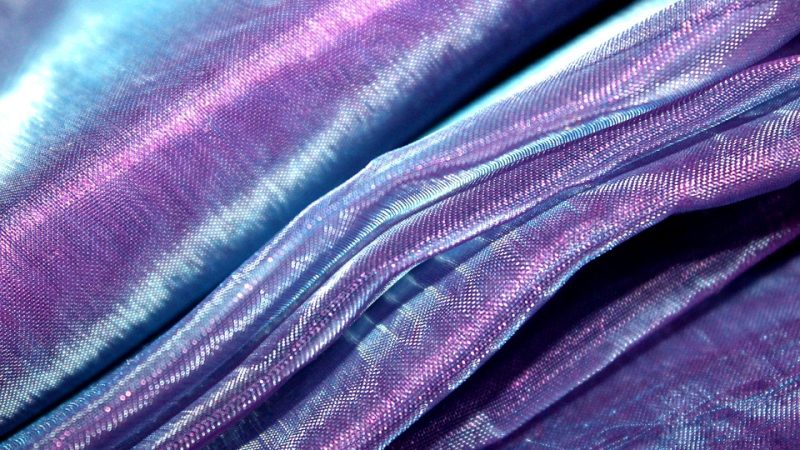Complex, recalcitrant polymers represent a barrier in the biodegradation process during anaerobic digestion (AD) towards biogas production. This concerns both, biopolymers from plant waste as well as synthetic polymeric plastics entering biogas plants as packaging material with food waste. Therefore, microbial populations and their enzymes involved in the hydrolysis of lignocellulose-rich plant material and modified polyesters are investigated to develop a strategy to biologically boost the conversion of waste to bioenergy by tailor-made microbial communities and bioaugmentation.
Polyester is a category of polymers that contain an ester functional group in their main chain, which is most commonly referred to as a type called polyethylene terephthalate (PET). As synthetic products from chemical polymerization, most synthetic polyesters are not biodegradable. Natural polyesters, occurring in plant cuticles as cutin for example, demonstrate that these compounds can be degradable. Thus, bioplastics are created by modifying their chain length, number of rings and functional groups according to natures’ blueprint resulting in similar fermentable poly-(butylene adipate-co-terephthalate) blends (PBAT). At acib, two strategies are focusing on the anaerobic bioconversion process: Firstly, a selective enrichment of mixed hydrolytic bacterial populations from natural inoculation sources (such as fermentation sludge from a biogas plant or plant biomass waste) is achieved by cultivating biopolymer inherent communities. Secondly, in silico searches for specialized enzymes and potential microbial key-players are performed to characterize anaerobic hydrolases (hemi/cellulases, cutinases, and esterases) that can be expressed heterologously in E.coli based vector systems. Subsequently, specific hydrolysis rates for certain polyester modifications are assessed in biomethane potential tests to study the effect of these end-to-end approaches. This will ultimately lead to the reduction of waste accumulation (besides re- and up-cycling), but will also help to prevent land-use competition between bioenergy & food crop cultivation by tapping unavoidable waste streams in AD.
Polyester is a category of polymers that contain an ester functional group in their main chain, which is most commonly referred to as a type called polyethylene terephthalate (PET). As synthetic products from chemical polymerization, most synthetic polyesters are not biodegradable. Natural polyesters, occurring in plant cuticles as cutin for example, demonstrate that these compounds can be degradable. Thus, bioplastics are created by modifying their chain length, number of rings and functional groups according to natures’ blueprint resulting in similar fermentable poly-(butylene adipate-co-terephthalate) blends (PBAT). At acib, two strategies are focusing on the anaerobic bioconversion process: Firstly, a selective enrichment of mixed hydrolytic bacterial populations from natural inoculation sources (such as fermentation sludge from a biogas plant or plant biomass waste) is achieved by cultivating biopolymer inherent communities. Secondly, in silico searches for specialized enzymes and potential microbial key-players are performed to characterize anaerobic hydrolases (hemi/cellulases, cutinases, and esterases) that can be expressed heterologously in E.coli based vector systems. Subsequently, specific hydrolysis rates for certain polyester modifications are assessed in biomethane potential tests to study the effect of these end-to-end approaches. This will ultimately lead to the reduction of waste accumulation (besides re- and up-cycling), but will also help to prevent land-use competition between bioenergy & food crop cultivation by tapping unavoidable waste streams in AD.


This blog bases on the following poster presented at the 8th ÖGMBT Annual Meeting in September 2016 :
S Weiß, V Perz, D Ribitsch, GM Gübitz: Functional Microorganisms and Enzymes for improved anaerobic digestion of plastics and plant waste material
Picture credits: Pixabay
S Weiß, V Perz, D Ribitsch, GM Gübitz: Functional Microorganisms and Enzymes for improved anaerobic digestion of plastics and plant waste material
Picture credits: Pixabay
